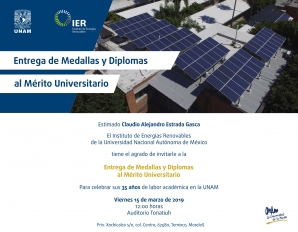L.G. Ceballos-Mendivil, R.E. Cabanillas-López, J.C. Tánori-Córdova, R. Murrieta-Yescas, C.A. Pérez-Rábago, H.I. Villafán-Vidales, C.A. Arancibia-Bulnes, C.A. Estrada.
Abstract
Silicon carbide (SiC) has been prepared successfully using concentrated solar energy provided by the IER-UNAM solar furnace. This has led to the development of a low CO2 emissions process for the production of this material via carbothermic reduction of a silica/carbon (SiO2/C) nanocomposite, which has shown a more reactive carbon for formation of composite, being more thermally stable. Silica (obtained by a sol–gel process) and sucrose were used as precursors of silicon and carbon, respectively, at a temperature of 700 °C in controlled atmosphere (nitrogen) for the formation of the SiO2/C composite. This composite was used in a second step to obtain SiC at a temperature of 1500 °C, in argon atmosphere. The experimental setup used a Pyrex® glass spherical vessel designed to work with concentrated solar power and controlled atmospheres. The structure and morphology of the solar obtained SiC were analyzed with FTIR, XRD, TGA/DSC, SEM and TEM techniques. Results show that it is feasible to use concentrated solar energy for the synthesis of SiC. The solar SiC obtained is nanostructured and is mainly β-SiC.
Synthesis of silicon carbide using concentrated solar energy

